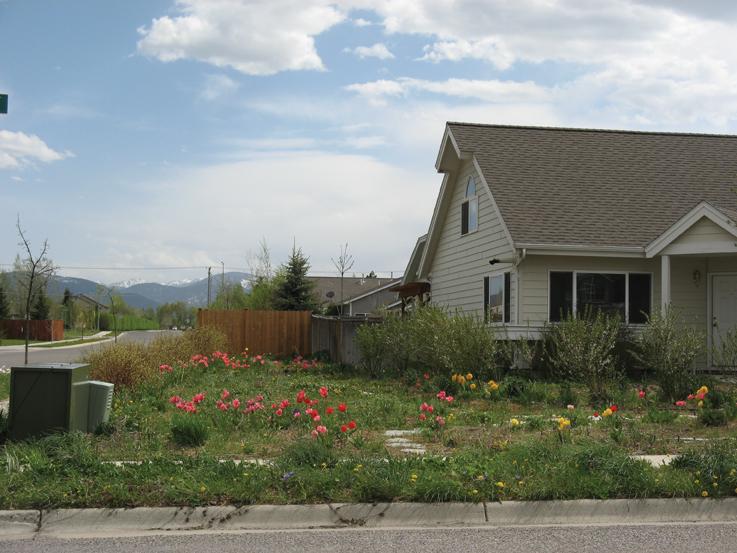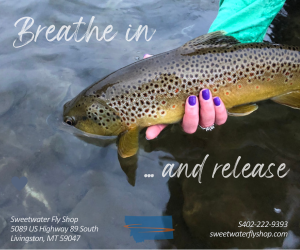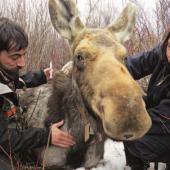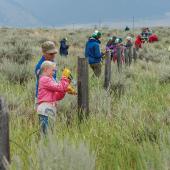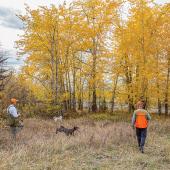Trout-Friendly Lawns
Landscaping with fish and rivers in mind.
Every yard in Montana is part of a local watershed that ends up in our world-class trout waters, which means that with population growth comes more sources of water pollution and less water for the fish.
There are some easy things that residents can do to protect our fisheries, which is why the Trout-Friendly Lawns movement encourages landowners to avoid chemical pesticides, lawn fertilizers, and irresponsible watering habits. The group distributes yard signs and information to those who commit to a few “trout-friendly” lawn care techniques. Are you up for the challenge?
Say No to Chemical Fertilizers
Chemical fertilizers provide a short burst of nitrogen and phosphorus that can wash into waterways and contribute to algae blooms. This algae depletes oxygen in the water and stresses the trout. As on land, pesticides kill aquatic vegetation and insects upon which trout feed. They also harm family pets and microbes essential to the health of our soils. But organic fertilizers such as compost and lawn clippings promote plant growth and encourage soil organisms that reduce thatch buildup. They are less soluble, thus less likely to leach into the watershed.
Say No to Pesticides
Pesticides should be the last resort in weed or pest control, because they’re toxic to fish, wildlife, and pets. If you must have a lawn that looks like Coors Field, try pulling weeds in the spring while the ground is moist instead of using chemical pesticides and herbicides. Weed control in the spring also eliminates the production and spread of new seeds. Mowing the lawn taller than 2.5” is another great way to outcompete weeds and reduce irrigation demand. If pesticides are absolutely necessary, spot spray. Consider trying vinegar first to kill problem weeds.
Rethink Riverbank Landscaping
Healthy stream bank vegetation is critical to trout, as well as aquatic, terrestrial, and avian wildlife. So if you live along a stream or river, keep or replant the native shrubs, trees, and other plants along the streambank. This riparian vegetation prevents erosion, reduces flood impacts, and shades the water to keep temperatures low. Natural buffers serve as nesting sites for birds and filter sediment, nutrients, and pesticides from your lawn.
Turn It off
Overwatering lawns not only causes runoff, it encourages grass to grow shallow roots, making lawns susceptible to disease and drought. Excessive watering also depletes the limited water supply, reducing trout habitat and warming the water. So water deeply and less often, and consider converting lawns to native plant gardens or native turf grasses. The fish will thank you, and you’ll earn your yard sign.
Trout-Friendly Lawns is a public education effort by Trout Unlimited, Missoula Valley Water Quality District, Missoula County Weed District, Montana Water Trust, Clark Fork Coalition, Hellgate Hunters & Anglers, and New West Landscapes.

